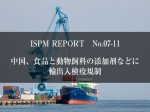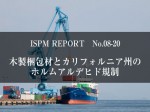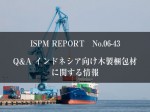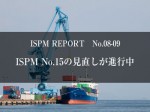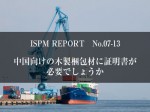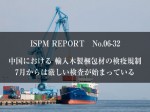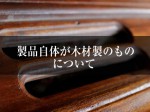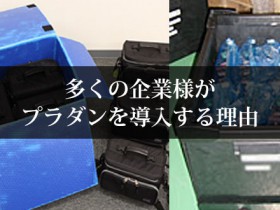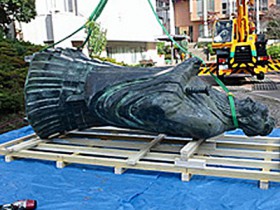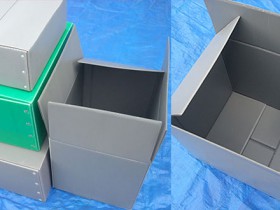- Home
- 燻蒸情報 ISPM REPORT
- 米国税関、ISPM No.15 違反の輸入木製梱包材に罰金課徴
米国税関、ISPM No.15 違反の輸入木製梱包材に罰金課徴
- 2015/11/6
- 燻蒸情報 ISPM REPORT

米国税関、ISPM No.15 違反の輸入木製梱包材に罰金課徴
International Standards for Phytosanitary Measures ISPM REPORT No.07‐05
米国税関・国境警備局(US Customs and Boarder Protection)は3月9日実施で、米国輸入規則に違反した輸入木製梱包材には、輸入者または船社などの運送人・通関業者・フォワーダーやNVOCC などの貨物管理者から損害賠償金ないし罰金を徴集することもありうると発表しました。しかし、これは海外の輸出者や梱包業者に対する罰金ではありません。
米国では2006年7月5日からISPM No.15に基づいた輸入木製梱包材規則が完全実施になっていますが、この完全実施までには三段階のステップを経てきたものです。今の時点で、なぜこのような罰金徴集の発表になったのかは定かでありませんが、米国規則では、世界のほかの国と違って違反梱包材の国内消毒処理は認められておらず、全て再輸出(積戻し)処分となります。この違反梱包材とは、マークのないもの、不適切なマークのもの、マークがあっても害虫がいるもの、などのことですが、再輸出に伴う全ての費用は違反者に帰すことになっています。ところが、私見ながら、違反者の特定が難しいこともあるので、この費用確保のために輸入者・船社・通関業者・NVO などが税関に対して積んでいる保証金または保証金保険から、罰金を徴収することもある旨を示したものではないかと思われます。
いざ、積戻しや再輸出になれば、米国の輸入者は海外の輸出者に対してその罰金等の費用を請求するのみならず、商品代金の返還・契約不履行による損害・遅延による損害などを賠償請求することもありえましょう。特に、コンテナ内のダンネージ材や、鋼材船などの在来船内ダンネージ材について検査規則が厳しく適用されると、膨大な違反事例が出現するものと危惧されます。
米国の輸入港で厳しい木製梱包材検査を行えば、通常でさえ混んでいるコンテナ港を混乱におとしめることになりましょう。コンテナ内のダンネージまで厳しくマークの有無を検査されては、我国の認証スタンプ制度では、作業会社や運送会社ではスタンプを持てないので、十分に対応しきれないおそれがあります。いきおい、ダンネージなしの危険なコンテナ輸送が増えてしまうと、大陸横断トラックやダブルスタックトレインが転覆事故を続発させれば、米国経済への影響はテロリストの攻撃にも匹敵するものになるでしょう。よもや、米国税関がこんな血迷ったことをする筈はないものと、期待しましょう。

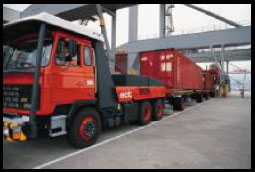
*************************************************************
次に米国税関のWebsite に載っている
GUIDELINES FOR LIQUIDATED DAMAGES AND PENALTIES ON WOOD PACKING MATERIAL (WPM)
「木製梱包材に関する損害賠償および罰金のガイドライン」 原文をご参考までに掲載します。
*************************************************************
GUIDELINES FOR LIQUIDATED DAMAGES AND PENALTIES
ON WOOD PACKING MATERIAL (WPM)
These “Guidelines for Liquidated Damages and Penalties on WPM” shall go into effect on March 9, 2007. The statutory requirements of 7 C.F.R. §319.40-3 mandate that regulated WPM ? such as, crates, boxes, and pieces of wood used to support or brace cargo ? being imported into the United States shall be heat treated or fumigated with methyl bromide in accordance with EPA label instructions and include a mark that certifies the wood completed the required treatment under the “Guidelines for Regulating Wood Packing Material in International Trade,” ISPM 15 of the International Standards of Phytosanitary Measures (ISPM) and any associated amendments, revisions or exemptions identified by the U.S. Department of Agriculture, Animal and Plant Health Inspection Service (APHIS).
The regulation (7 C.F.R. §319.40-3) requires that WPM display a visible, legible, and permanent mark certifying treatment. The mark must be a legible and permanent mark that indicates that the article has been subjected to the approved measure and include the following elements:
1. The International Plant Protection Convention (IPPC) logo;
2. The ISO two-letter country code for the country that produced the wood packing material followed by a unique number code;
3. The unique number code is assigned by the country’s National Plant Protection Organization (NPPO) to the producer of the wood packaging material, who is responsible for ensuring appropriate wood is used and properly marked. Therefore, this code allows a trace back to the facility that treated and stamped the WPM; and
4. An abbreviation that discloses the type of treatment (HT for heat treatment or MB for methyl bromide fumigation; Guatemala is approved to use TT in place of HT or BM in place of MB).
Here is an example of an acceptable WPM mark:

The IPPC logo is on the left; on the right, XX represents the ISO country code and 000 represents the unique number assigned to the producer of the wood packaging material in order to be able to trace back to the treatment facility used; YY represents the method of treatment. Other letters and symbols may be present on the mark as long as the above items are included and clearly legible, permanent, and placed in a visible location, preferably on at least two sides of the article being certified.
EXCEPTIONS AND EXEMPTIONS
The regulation applies to WPM made from softwood or hardwood. Certain articles, though, are exempt or excepted from the treatment and marking requirements. The exceptions are outlined in 7 C.F.R. §319.40-3. The exceptions and exemptions (further added by Agriculture) are delineated in Appendix B of the CBP document entitled “Operating Procedures for Implementation of the Wood Packaging Materials (WPM) Regulation,” as amended. This may be viewed on the import section of cbp.gov under Commercial Enforcement.
FAILURE TO COMPLY WITH 7 C.F.R. §319.40-3
Regulated WPM must be properly marked to indicate that it has been either heat treated or treated with methyl bromide. There are three categories under WPM for this enforcement:
1) UNMARKED: WPM that is encountered by CBP during the course of inspection and found not bearing the required treatment and markings required under 7 C.F.R. §319.40-3(b)(1) and C.F.R. §319.40-3(b)(2)
2) INAPPROPRIATELY MARKED: WPM that is encountered by CBP during the course of inspection and found to be inappropriately marked or illegibly marked is assumed to be untreated by either of the approved methods identified under 7 C.F.R §319.40-3(b)(1); and
3) INFESTED: WPM that is infested with a named pest confirms that the WPM has not been treated in accordance with 7 C.F.R §319.40-3(b)(1). Named pests are live wood boring pests of the families Cerambycidae, Buprestidae, Siricidae, Cossidae, Curculionidae, Platypodidae, Sesiidae, or Scolytidae.
Section 319.40-3(b)(3) provides for immediate export of WPM that does not contain the required mark. Marked WPM containing pests in the above mentioned families is considered WPM that has not been treated and marked in accordance with §319.40-3, and shall be immediately exported pursuant to §319.40-3(b)(3). The importer of record, carrier, or bonded custodian is responsible for any costs or charges associated with export.
When assessing liquidated damages and/or penalties, the value of the merchandise is the value of the WPM plus the value of the commodity or commodities identified for importation on the entry documentation.
ASSESSING LIQUIDATED DAMAGES
If the party whose bond is obligated at the time of the discovery of the violation has received an Emergency Action Notification (EAN) requiring export of the violative WPM but fails to do so, CBP may issue a liquidated damages claim against that party.
The following procedures shall be utilized in liquidated damage cases where there is a failure to comply with the EAN:
・ If a consumption entry is made and the goods were conditionally released, issue the claim against the importer under 19 C.F.R. §113.62(e). The liquidated damages claim shall be issued at three times (3x) the entered value of the merchandise but not greater than the bond amount.
・ If a consumption entry is made, but the goods were not conditionally released, and the importer failed to comply with the EAN, issue the claim against the importer under 19 C.F.R. §113.62(g). The amount of the liquidated damages claim shall be the cost of export or remediation but no greater than the bond amount. In an effort to ensure compliance with the EAN, the goods shall not be released and the port should follow procedures outlined in 19 C.F.R. §151.16, Detention of Merchandise, until the WPM violation is addressed. Once it is determined that the requirements of the EAN will not be met and CBP has to take remedial measures, the claim for liquidated damages shall be issued against the importer.
・ If an entry is not made and the carrier failed to comply with the EAN, issue the claim against the carrier under 19 C.F.R. §113.64(b). The liquidated damages claim shall be issued at the entered value of the merchandise, but no greater than the bond amount.
・ If a party other than the carrier or importer failed to comply with the EAN, and that party is responsible for the merchandise under its custodial bond, issue the claim against that party under 19 C.F.R. §113.63(a)(1). The liquidated damages claim shall be issued at three times (3x) the entered value of the merchandise, but no greater than the bond amount.
ASSESSING PENALTIES
Penalties may be assessed in addition to claims for liquidated damages, and may be assessed even though there is compliance with all EANs in cases wherein:
・ The importer, carrier, or bonded custodian attempts to conceal a violation of WPM, CBP personnel shall issue a penalty either under Title 19 United States Code 1592, or 1595a(b).
・ The importer, carrier, or bonded custodian has continuous documented violations (more than 5) over one fiscal year period nationally, CBP personnel may issue a penalty under Title 19 United States Code 1592, or 1595a(b) may also be assessed.
WPM violations (all categories) shall be documented in the EAN database, and WPM violations under categories 1 and 2 shall be documented in CBP databases with the WPM violation code wp:nc.
ISPM 15 REQUIREMENTS APPLY TO ALL SPECIES OF CONIFEROUS (SOFTWOOD) AND NON-CONIFEROUS (HARDWOOD) PACKAGING MATERIALS.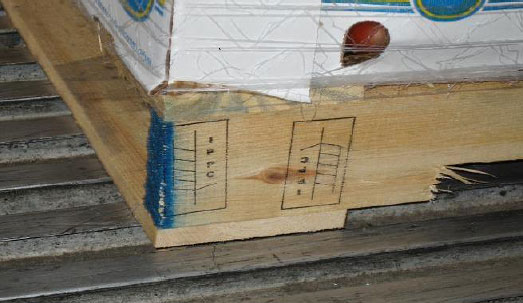 Violative Packaging (違反梱包の例)
Violative Packaging (違反梱包の例)
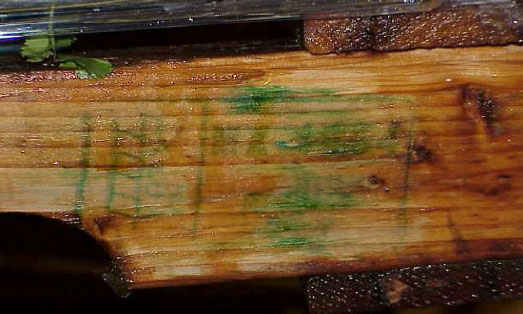 Illegible WPM Mark (判読できないマーク)
Illegible WPM Mark (判読できないマーク)






